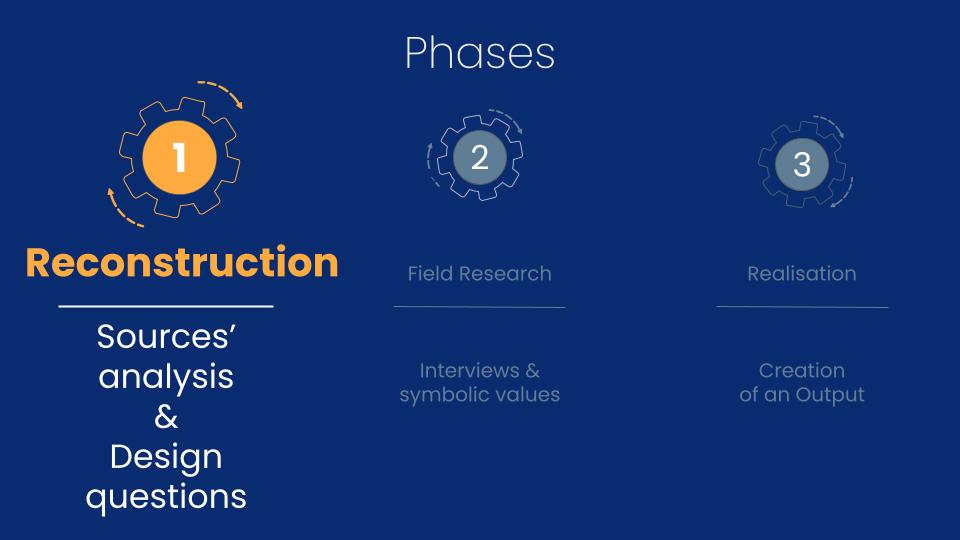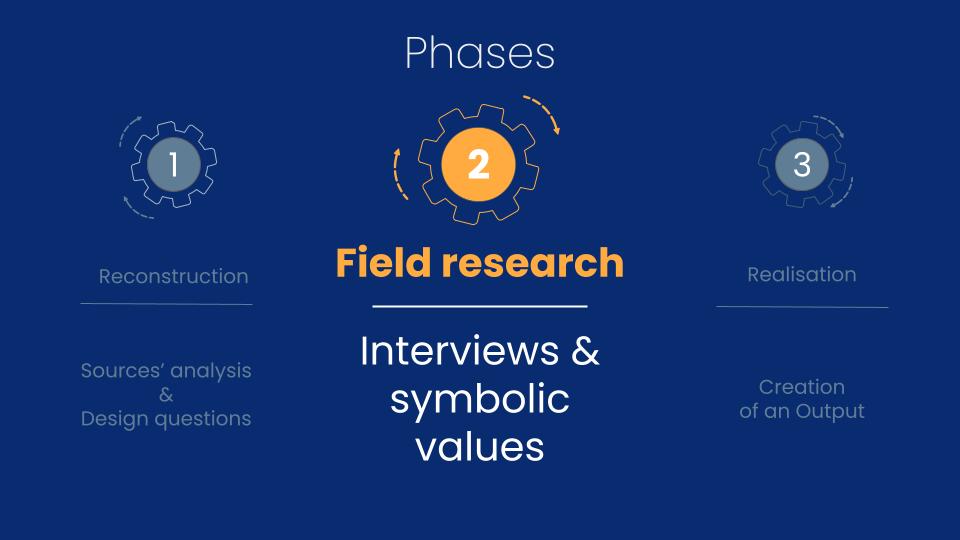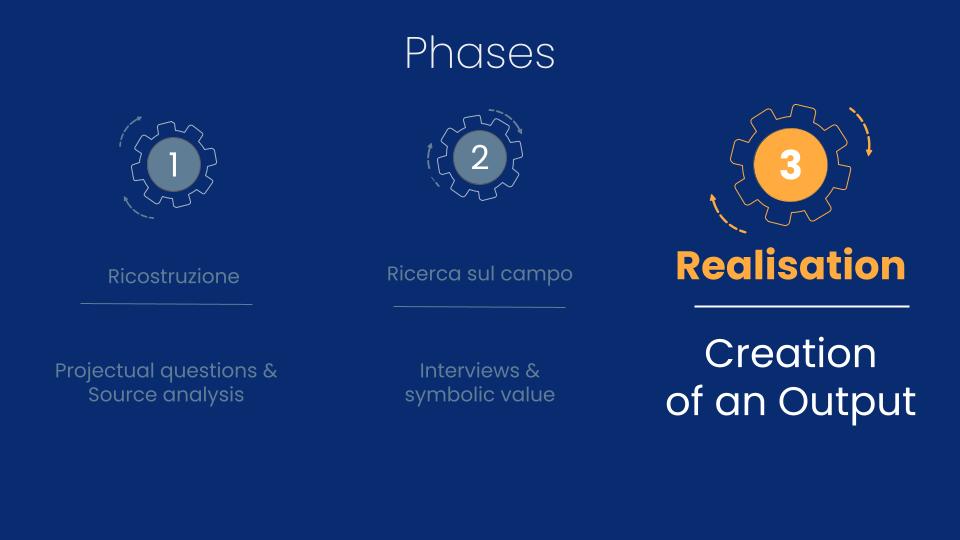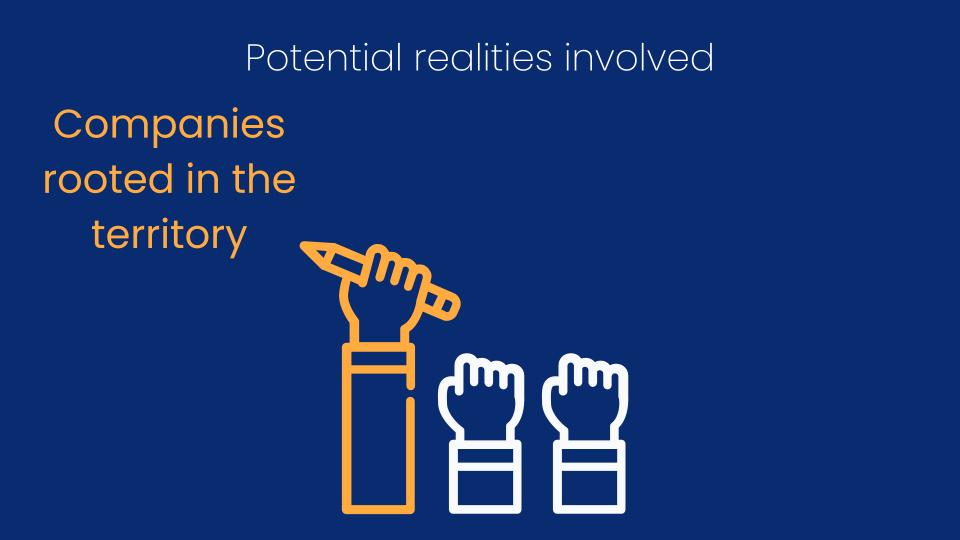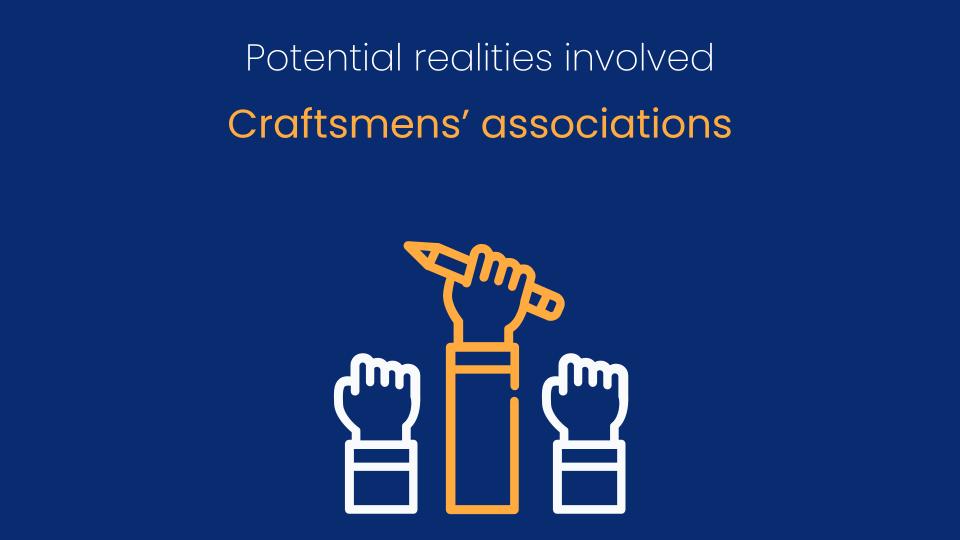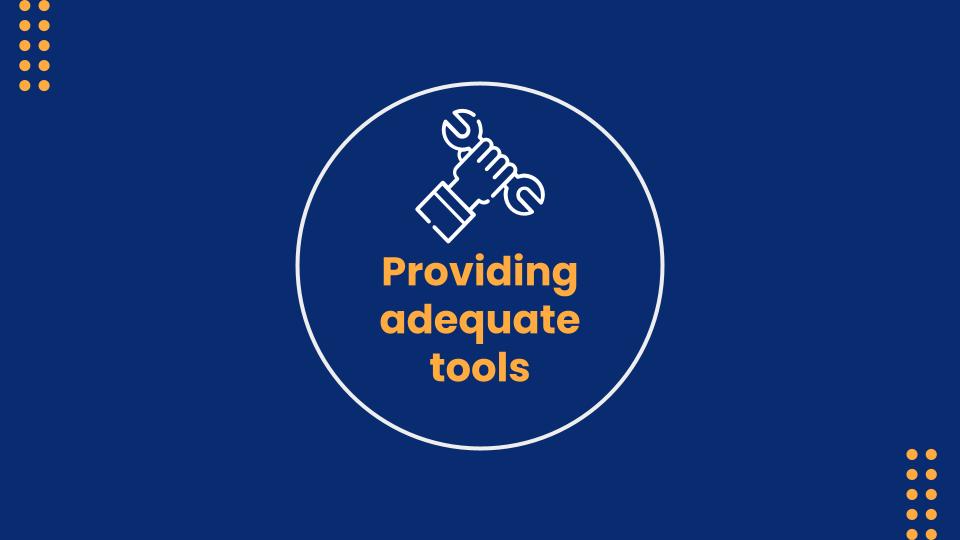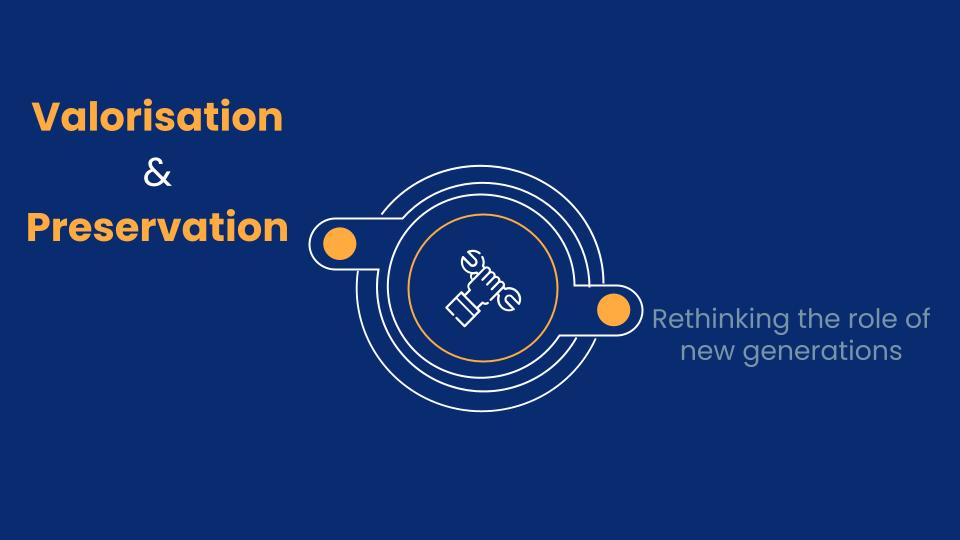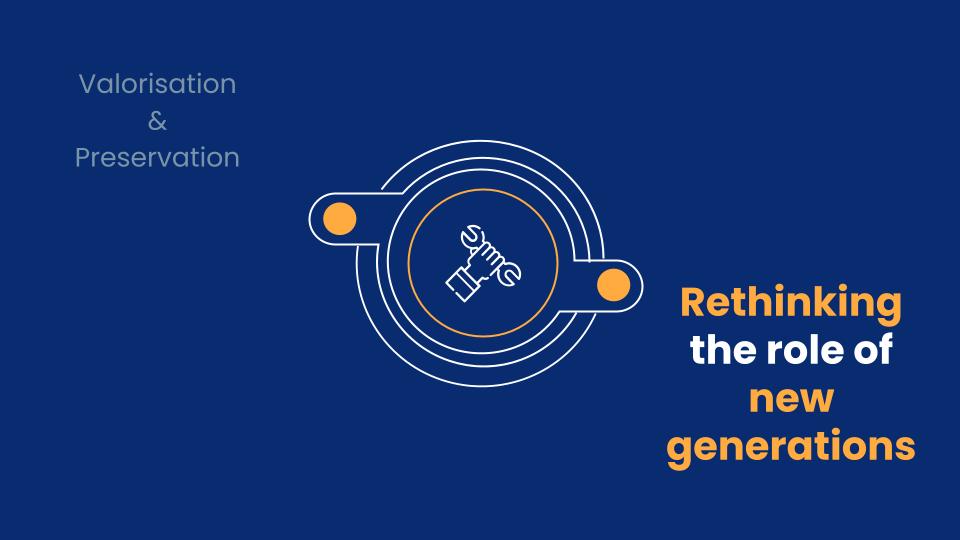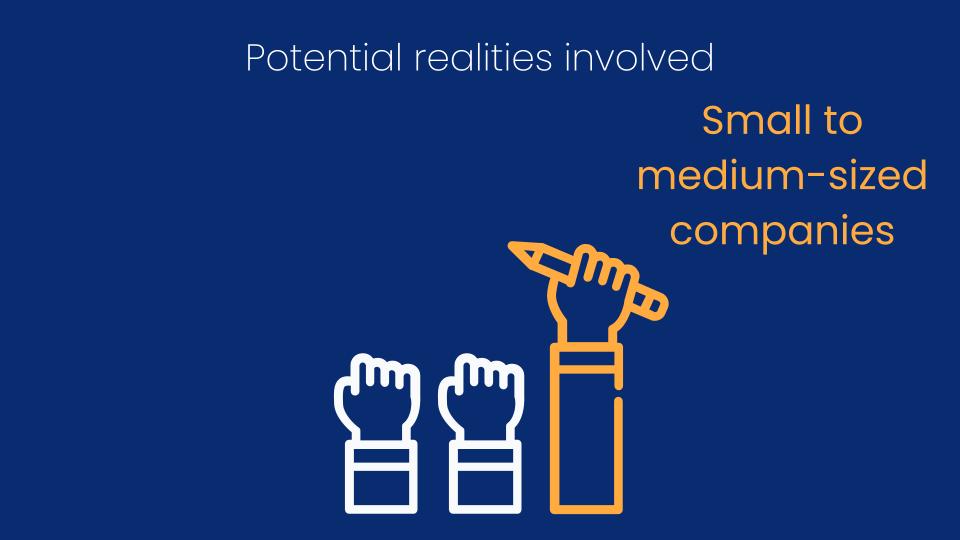Eidos Method
Basic information
Project Title
Eidos Method
Full project title
Eidos Method
Category
Shaping a circular industrial ecosystem and supporting life-cycle thinking
Project Description
Eidos Method is an innovative teaching methodology based on the valorisation of a specific company’s heritage. It potentially involves students from all educational levels (Primary School, High School, Technical School), and is based on the combination between theory and practice. Eidos’ principal aim is to preserve and increase the value of the company's historical and territorial heritage by choosing an iconic object that represents its tradition and its originality.
Geographical Scope
National
Project Region
Veneto Region and Ca Foscary University - Venice Italy, Italy
Urban or rural issues
It addresses urban-rural linkages
Physical or other transformations
It refers to other types of transformations (soft investment)
EU Programme or fund
No
Description of the project
Summary
Developed thanks to the support of Ca Foscari University of Venice, Italy, as a sample for other cities and context, the "Eidos Method" based on historical research and practice, aims to improve the italian teaching method.
A)The project is articulated in three main phases:
Didactical approach: In the first phase, students can understand the main principles of historical research thanks to experts’ assistance that involves companies and territorial sources. By giving them historical tools, students are able to understand the context in which they are operating, its story and particularity. In this sense, history becomes a key to read and to discover past and future changes of a specific firm and territory.
Field research and practice: In the second phase, thanks to the gained historical knowledge from experts' aid, students can interview people from the selected territories and companies to comprehend the context in which they are operating. This phase is particularly important because of the principal purpose of this research: gaining historical and social awareness of a specific object to possibly find new approaches and solutions.
Realisation: the ending phase is designed to create an iconic object (output) that describes and represents both the history and the originality of the territory and the firm who has developed it.
B) New approaches: Through this experience students might improve their critical approach to understand how the specific product was made and conceived to recreate and improve it, according to the current ethical and economic sustainability european standards.
C) Project structure and timing: thanks to his flexibility, the Eidos method is designed for schools of all levels. In particular, it can cover an amount of time from three months (circa 200 hrs minimum applied during school-work alternation, italian PCTO to a one year project. The duration is strictly related to companies’ and schools’ will.
A)The project is articulated in three main phases:
Didactical approach: In the first phase, students can understand the main principles of historical research thanks to experts’ assistance that involves companies and territorial sources. By giving them historical tools, students are able to understand the context in which they are operating, its story and particularity. In this sense, history becomes a key to read and to discover past and future changes of a specific firm and territory.
Field research and practice: In the second phase, thanks to the gained historical knowledge from experts' aid, students can interview people from the selected territories and companies to comprehend the context in which they are operating. This phase is particularly important because of the principal purpose of this research: gaining historical and social awareness of a specific object to possibly find new approaches and solutions.
Realisation: the ending phase is designed to create an iconic object (output) that describes and represents both the history and the originality of the territory and the firm who has developed it.
B) New approaches: Through this experience students might improve their critical approach to understand how the specific product was made and conceived to recreate and improve it, according to the current ethical and economic sustainability european standards.
C) Project structure and timing: thanks to his flexibility, the Eidos method is designed for schools of all levels. In particular, it can cover an amount of time from three months (circa 200 hrs minimum applied during school-work alternation, italian PCTO to a one year project. The duration is strictly related to companies’ and schools’ will.
Key objectives for sustainability
Social sustainability: Eidos Methods’ will is to valorise the companies’ and artisans’ historical and territorial heritage by choosing an iconic object that represents their tradition and their originality. Through this choice Eidos actively involves people (Students, companies employees, inhabitants) to preserve and valorise the companies’ goals and to develop a common awareness of historical and economical changes in their local territory. This approach can be useful in order to find new solutions which might help the territorial development and its preservation and to create a new circular network made of people and stakeholders. In particular, the active involvement of students in the conservation might set up a close connection between them and companies who shall require their help or skills in the future.
Environment sustainability: The ending output, created by selected “actors” of the project, is conceived not only to represent the company and its territory, but to decrease its environmental impact by choosing sustainable materials.
Environment sustainability: The ending output, created by selected “actors” of the project, is conceived not only to represent the company and its territory, but to decrease its environmental impact by choosing sustainable materials.
Key objectives for aesthetics and quality
The Eidos Method, through its valorization of a company’s values and history through an artefact, proposes to create specific spaces (inside or outside the company) that can expose the creative and field research processes. These spaces can be designed to answer a company’s aesthetic standards and needs. Aesthetics is an automatic consequence in this process because of the strict relation to products’ realisation and creativity.
Key objectives for inclusion
Inclusivity is a central part in this project because it proves how significant the role of the new generation is (Students) in the preservation and creation of past and future companies' heritage. Furthermore, it testifies the meaningful part played by inhabitants and population in the conservation of territorial and economic history.
Moreover, It shows the importance of interconnection between historical research and companies’ production, both playing a key role to reconstruct the architecture of territorial changes and to verify the necessity of sustainability in the creation of new products. Since the ending phase requires a certain amount of creativity, all the people involved (students as designers) can contribute with their inspiration to the creation of the artefact.
Moreover, It shows the importance of interconnection between historical research and companies’ production, both playing a key role to reconstruct the architecture of territorial changes and to verify the necessity of sustainability in the creation of new products. Since the ending phase requires a certain amount of creativity, all the people involved (students as designers) can contribute with their inspiration to the creation of the artefact.
Results in relation to category
We are not aware of any similar program in Europe. But this could represent an important development step because as a prototype, Eidos Group is open to new suggestions and improvements.
How Citizens benefit
Citizens and the civil society, because of Eidos methodology, are main “actors” since they are “actively” (students and companies) and “passively” (inhabitants) involved in the realisation process. This project potentially establishes a useful and close connection between the actors in finding new ways to preserve economic and territorial heritage in a sustainable way.
Physical or other transformations
It refers to other types of transformations (soft investment)
Innovative character
Eidos, thanks to its innovative teaching method, creates a circular system by connecting all the actors involved (companies, territories, students and the population). In particular, through historical research and practice (interviews and outputs’ realisation), it is possible to increase and reevaluate the territorial sources and improve the sense of belonging. In this regard, obtaining social and historical awareness might be helpful to increase sustainability and apply better decisions in the future.
Disciplines/knowledge reflected
Eidos puts together students' activities and companies' needs, thanks to an interdisciplinary approach made by historical research and practice.
Methodology used
The project is articulated in three main phases:
Didactical approach: In the first phase, students can understand the main principles of historical research thanks to experts’ assistance that involves companies and territorial sources. By giving them historical tools, students are able to understand the context in which they are operating, its story and particularity. In this sense, history becomes a key to read and to discover past and future changes of a specific firm and territory.
Field research and practice: In the second phase, thanks to the gained historical knowledge from experts' aid, students can interview people from the selected territories and companies to comprehend the context in which they are operating. This phase is particularly important because of the principal purpose of this research: gaining historical and social awareness of a specific object to possibly find new approaches and solutions.
Realisation: the ending phase is designed to create an iconic object (output) that describes and represents both the history and the originality of the territory and the firm who has developed it.
Didactical approach: In the first phase, students can understand the main principles of historical research thanks to experts’ assistance that involves companies and territorial sources. By giving them historical tools, students are able to understand the context in which they are operating, its story and particularity. In this sense, history becomes a key to read and to discover past and future changes of a specific firm and territory.
Field research and practice: In the second phase, thanks to the gained historical knowledge from experts' aid, students can interview people from the selected territories and companies to comprehend the context in which they are operating. This phase is particularly important because of the principal purpose of this research: gaining historical and social awareness of a specific object to possibly find new approaches and solutions.
Realisation: the ending phase is designed to create an iconic object (output) that describes and represents both the history and the originality of the territory and the firm who has developed it.
How stakeholders are engaged
Eidos Methods’ will is to valorise the companies’ and artisans’ historical and territorial heritage by choosing an iconic object that represents their tradition and their originality. Through this choice Eidos actively involves people (Students, companies employees, inhabitants) to preserve and valorise the companies’ goals and to develop a common awareness of historical and economical changes in their local territory. This approach can be useful in order to find new solutions which might help the territorial development and its preservation and to create a new circular network made of people and stakeholders. In particular, the active involvement of students in the conservation might set up a close connection between them and companies who shall require their help or skills in the future.
Global challenges
Global challenges addressed:
1)Climate change: so far as the iconic object is part of the research project we expect to use recycled or sustainable products to preserve the environment, pushing companies to reflect on their impact on the local territory.
2) Manual and Creative ability preservation: where possible, this project views students’ involvement not only as “investigative” actors and ‘’designers’’ but also as possible preservers of ancient and historical “known-how” (crafters) of products and objects. From this perspective they can understand, reply and improve the use of a specific object without deleting its iconicity and originality.
1)Climate change: so far as the iconic object is part of the research project we expect to use recycled or sustainable products to preserve the environment, pushing companies to reflect on their impact on the local territory.
2) Manual and Creative ability preservation: where possible, this project views students’ involvement not only as “investigative” actors and ‘’designers’’ but also as possible preservers of ancient and historical “known-how” (crafters) of products and objects. From this perspective they can understand, reply and improve the use of a specific object without deleting its iconicity and originality.
Learning transferred to other parties
Thanks its flexibility the "Eidos Method" based on historical research and practice, aims to improve the italian teaching method and it can be replicated and transferred to other contexts.
Keywords
Didactic
Valorisation
Heritage
Historical research
Sustainability

